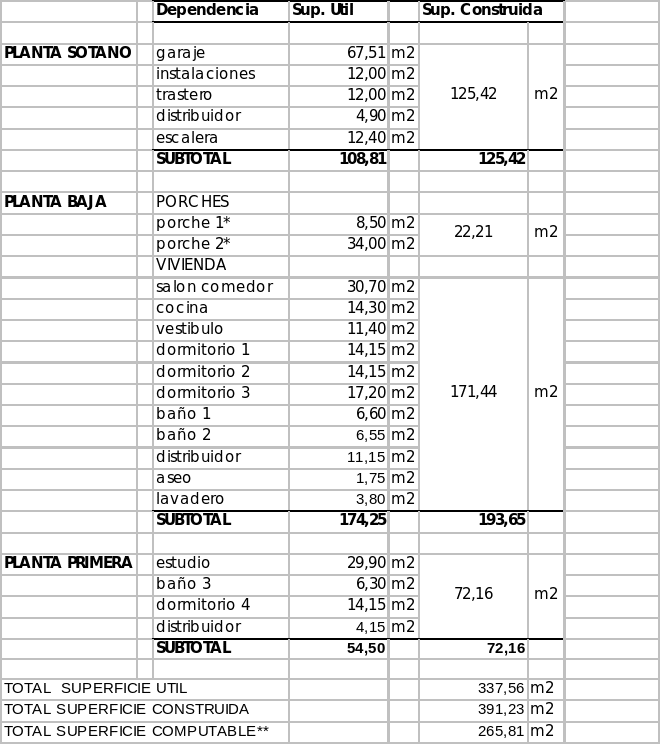POSITION DESCRIPTION FOR RESIDENT PHYSICIANS DEPARTMENT OF DERMATOLOGY NORTHWESTERN
POSITION LOCAL SERVICE DIRECTOR HOURS 13 HOURSWEEKS4 POSITION DESCRIPTION 1POSITION TITLE ACCREDITATION OFFICER
APPLICATION FORM POSITION APPLIED FOR 1 PERSONAL
e Astern Suburbs Hockey Club Managers Position Description
EDUCATION 998504 DMA MUSIC COMPOSITION CORNELL UNIVERSITY DISSERTATION
HUMAN RESOURCES RECORDS STAFFING RECORDS INVOLVING STAFF POSITIONS
POSITION DESCRIPTION FOR RESIDENT PHYSICIANS
POSITION DESCRIPTION FOR RESIDENT PHYSICIANS
Department of Dermatology
Northwestern University
Introduction
The ACGME-approved residency training program at Northwestern University School of Medicine is under the direction of Dr. Roopal V. Kundu, Assistant Professor and Residency Program Director. The residency training program currently utilizes the following hospitals:
Outpatient Clinics of Northwestern Medical Faculty Foundation (NMFF)
Northwestern Memorial Hospital (NMH)
Lurie Childrens Hospital (LC)
Veterans Affairs Medical Center (VAMC)
Outpatient Clinics of NorthShore University Health System (Northshore)
General Principles of the Training Program for Residents in Dermatology at Northwestern University:
The housestaff physician must meet the qualifications for resident eligibility outlined in the Essentials of Accredited Residencies in Graduate Medical Education in the AMA Graduate Medical Education Directory.
As the position of housestaff physician involves a combination of supervised, progressively more complex and independent patient evaluation and management functions and formal education activities, the competence of the housestaff physician is evaluated on a regular basis every six months. The program maintains a confidential record of the evaluation.
The position of housestaff physician entails provision of care commensurate with the housestaff physician’s level of advancement and competence, under the general supervision of appropriately privileged attending teaching staff. This includes:
Participation in safe, effective, and compassionate patient care
Developing an understanding of ethical, socioeconomic and medical/legal issues that affect graduate medical education and of how to apply cost containment measures in the provision of patient care
Participation in the educational activities of the training program and, as appropriate, assumption of responsibility for teaching and supervising other residents and students, and participation in institutional orientation and education programs and other activities involving the clinical staff
Participation in scholarly activities which may include basic science research, clinical investigation, and the publication of manuscripts resulting from these activities as well as case reports and book chapters under the supervision of the clinical and basic science faculty members in the department
Participation in institutional committees and councils to which the housestaff physician is appointed or invited
Performance of these duties in accordance with the established practices, procedures and policies of the institution, and those of its programs, clinical departments and other institutions to which the housestaff physician is assigned; including, among others, state licensure requirements for physicians in training, where these exist.
Position Descriptions for Resident Physicians Specific to Level
PGY-2
The PGY-2 dermatology resident rotates through Outpatient Dermatology with concomitant training in Dermatologic Surgery and Dermatopathology, and in some situations, Inpatient Dermatology and Pediatric Dermatology.
Clinical Outpatient Dermatology knowledge expected of the PGY-2 resident consists of the ability to obtain a dermatologic history, perform a dermatologic physical examination, present a focused case history, generate a basic dermatologic differential diagnosis, generate a basic treatment plan, and understand the use and side effects of dermatologic medications and therapies including phototherapy.
Clinical Outpatient Dermatology skills expected of the PGY-2 resident, which are to be performed with appropriate supervision, consist of the ability to perform office-based microscopic examinations (KOH preps, Tzanck smears, parasite preps), the ability to perform cryosurgery and chemosurgery (podophyllin), patch testing, intralesional injections, and incision and drainage of skin abscesses.
In the Clinical Outpatient setting, the PGY-2 resident is also expected to learn to differentiate disease severity, to develop communication skills with patients and staff, and to develop independent study habits.
In the Inpatient Dermatology setting, the PGY-2 resident is expected to perform a general medical history and physical examination as well as a detailed dermatologic history and physical examination, and to coordinate care with other medical specialties.
In the Inpatient Dermatology setting, the PGY-2 resident performs all outpatient skills in the inpatient setting when necessary and becomes competent at educating and counseling patients and families.
Dermatologic Surgery knowledge expected of the PGY-2 resident includes the ability to generate a basic differential diagnosis of cutaneous neoplasms and to understand appropriate biopsy approaches.
Dermatologic Surgery skills expected of the PGY-2 resident, which are to be performed with appropriate supervision, include the performance of skin biopsies (punch, shave, snip), simple excision, cryotherapy, wound debridement, acne surgery, curettage and electrodesiccation (benign and malignant lesions), and nail avulsion.
The PGY-2 resident learns to practice Universal Precautions in all surgical activities and to follow the safety practices at each hospital and clinic.
Dermatopathology knowledge expected of the PGY-2 resident includes the ability to recognize and describe common skin pathology histologically and to understand the principles of immunofluorescence and immunohistology.
The PGY-2 resident is expected to learn to collect skin specimens appropriately for optimal processing and histologic diagnosis and to develop independent study habits in Dermatopathology.
If a rotation in Pediatric Dermatology is performed during the PGY-2 year, the resident is expected to generate a differential diagnosis and management of common dermatologic disorders in children, to understand the approach to the pediatric patient and family, and to recognize the differences in the manifestations of cutaneous disorders in children versus adults. Exposure to Pediatric Dermatology is also a component of weekend call during the PGY-2 year and at least monthly pediatric dermatology rounds.
PGY-3
The PGY-3 dermatology resident rotates through Outpatient Dermatology and Inpatient Dermatology and has specific rotations in Dermatologic Surgery, Dermatopathology and Pediatric Dermatology.
The PGY-3 resident is expected to meet all training requirements set forth for PGY-2 residents in addition to those specific for the second year of dermatology residency training.
In the Clinical Outpatient setting, the PGY-3 resident is expected to generate a broader differential diagnosis of skin disorders and to become proficient in the use of dermatologic medications and light therapy.
The PGY-3 resident is expected to begin to make independent decisions with appropriate input from the attending physician.
The PGY-3 resident assumes a teaching role in the clinic.
In the Clinical Inpatient setting, the PGY-3 resident is expected to generate a dermatologic differential diagnosis and treatment plan for patients with complicated medical problems.
Dermatologic Surgery knowledge expected of the PGY-3 resident includes the ability to generate a broader differential diagnosis of cutaneous neoplasms and to understand the appropriate surgical approach to the treatment of benign and malignant skin lesions.
Dermatologic Surgery skills expected of the PGY-3 resident are expanded to include sclerotherapy, cosmetic procedures, laser surgery and complex excisions and layered closures under appropriate direct supervision.
In Pediatric Dermatology, the PGY-3 resident is expected to generate a differential diagnosis and management of common dermatological disorders in children, to understand the approach to the pediatric patient and family, and to recognize the differences in the manifestations of cutaneous disorders in children versus adults.
Dermatopathology knowledge expected of the PGY-3 resident includes the ability to recognize and describe less common skin pathology histologically and to generate an expanded differential diagnosis of histopathologic specimens.
The PGY-3 resident is expected to learn to collect skin specimens appropriately for optimal processing and histologic diagnosis and to develop independent study habits in Dermatopathology.
3. PGY-4
The PGY-4 dermatology resident rotates through Outpatient Dermatology, Inpatient Dermatology, Dermatologic Surgery, Dermatopathology and, in some situations, Pediatric Dermatology.
The PGY-4 resident is expected to meet all training requirements set forth for PGY-2 and PGY-3 residents in addition to those specific for the final year of residency training.
In the Outpatient Clinical setting, the PGY-4 resident is expected to generate a broad differential diagnosis, to manage complicated patients with appropriate supervision by the attending physician, and to understand the use of photopatch testing.
The PGY-4 resident is expected to develop independence with appropriate supervision and to assume an administrative role in clinics.
In Dermatologic Surgery, the PGY-4 resident is expected to generate a broad differential diagnosis of cutaneous neoplasms.
Dermatologic Surgery skills expected of the PGY-4 resident, which are to be performed with appropriate supervision, include nail matricectomy, skin grafts, local cutaneous flaps, hair replacement techniques, dermabrasion, and laser surgery. The resident is expected to have an understanding of Mohs micrographic surgery through observation.
In Dermatopathology, the PGY-4 resident is expected to generate a broad differential diagnosis of skin pathology specimens, to pair clinical findings with Dermatopathology findings, and to become familiar with reading Mohs micrographic surgery histology.
If a rotation in Pediatric Dermatology is performed during the PGY-4 year, the resident is expected to recognize more unusual skin disorders in pediatric patients and to exhibit greater skill in diagnosis and making management decisions.
During all three years of training, the residents have continuing formal didactic training in General Dermatology for 4-8 hours per week, in Pediatric Dermatology for 3-4 hours every month, in Dermatopathology with weekly rounds for an hour, and in Dermatologic Surgery with frequent lectures (on average once or twice per month).
INSIDE INFORMATION CHANGES IN COMPOSITION OF THE
JOB DESCRIPTION POSITION COMMUNITYBASED REHABILITATION COORDINATOR
NAME POSITION FIT PENDING GP
Tags: department of, the department, physicians, description, department, position, northwestern, resident, dermatology
- I ANEXO I HOJA INSCRIPCIÓN DUATLÓN MORISCO LA PUEBLA
- OTORGAMIENTO DE CRÉDITOS POR PRÁCTICAS EN EMPRESAS EL ALUMNOA……………………………………………………………………CON
- MINISTERSTVO PRO MÍSTNÍ ROZVOJ ČESKÉ REPUBLIKY PODKLADY PRO ZPRACOVÁNÍ
- VERSIE 2522016 NAAM VAN HET BESTAND DWHONEMACR VOLGNUMMER 3030
- UNIVERSITÀ DEGLI STUDI DI NAPOLI “L’ORIENTALE” DIPARTIMENTO DI STUDI
- 2 INFORMACIÓN SOBRE LA FUNCIÓN DE LOS
- 1 FUENTES EMISORAS CONSIDERADAS LAS EMISIONES CORRESPONDIENTES A
- 1105 EITHER CAT 6 PREDICTORS AND OUTCOME OF HOSPITALIZED
- Catalytic Organometallic Carbonheteroatom Bond Formation John f Hartwig Department
- ME COMPLACE INTERVENIR EN ESTA GALA DE TURISMO PARA
- 8 WARUNKI TRANSPORTU ZWIERZĄT ORAZ NORMY ŻYWIENIOWO – BYTOWE
- 703 CABINET OFFICE CODE OF PRACTICE ON INFORMING AND
- PATVIRTINTA ŠIAULIŲ JAUNŲJŲ TECHNIKŲ CENTRO L E DIREKTORIAUS PAREIGAS
- REVESTIMIENTOS REVESTIMIENTOS DE PARAMENTOS ENFOSCADOS GUARNECIDOS Y ENLUCIDOS GUARNECIDOS
- EXTRAORDINARY GATHERING OF SPECIAL ASTON MARTINS AT CONCOURS OF
- 401_2_11-SS-MSCRRev1
- WARSZAWA 27 LIPCA 2016 R OBCHODY 72 ROCZNICY POWSTANIA
- AUTORIDADES SUPERIORES DR EDUARDO DORYAN GARRÓN MINISTRO DE EDUCACIÓN
- EL LUNES 5 SE INICIAN LAS OBRAS DE RENOVACIÓN
- IX ROWEROWA DROGA KRZYŻOWA 16032013R (SOBOTA) START GODZ 840
- MISSOURI ASSISTIVE TECHNOLOGY ANNUAL REPORT 2008 ASSISTIVE TECHNOLOGY TRANSFORMING
- ZAŁĄCZNIK NR 3 DO UMOWY SPZ273152019 [1] USTAWA Z
- 4 PÁG 2 DE 2 WWWSINDICATOFERROVIARIOCOM SFESTATALSINDICATOFERROVIARIOCOM
- AUSTRALIAN CAPITAL TERRITORY DISALLOWABLE INSTRUMENTS—1995 A CHRONOLOGICAL LISTING OF
- GABINETE DEL MINISTRO VACANTES DE NIVEL SUPERIOR EN ORGANIZACIONES
- UNIVERZA V LJUBLJANI FILOZOFSKA FAKULTETA ODDELEK ZA SLOVENISTIKO ENOPREDMETNAPEDAGOŠKA
- CHICHESTER DISTRICT COUNCIL HEALTH AND SAFETY SELF AUDIT PROFORMA
- H OUSE OF REPRESENTATIVES SPONSOR JEFF HOOVER 2012 SPECIAL
- LIMITED LIABILITY COMPANY «DNEPROVSKY SPECIAL TUBES PLANT» UKRAINE 52035
- COMPTERENDU DE LA RÉUNION DE LANCEMENT DU PROJET ESCAPE
 MINISTERIO DEL INTERIOR 5 DIRECCIÒ GENERAL DE TRÀNSIT DIRECCIÓN
MINISTERIO DEL INTERIOR 5 DIRECCIÒ GENERAL DE TRÀNSIT DIRECCIÓNLETTER 4B DEED EXECUTED BY A COMPANY INDIVIDUAL
1 SFÂNTA TREIME 1 FIINȚA ȘI IPOSTASURILE ÎN SFÂNTA
DIE HALLE DER WELT MIT LICHT ERFÜLLEN ES WAR
 RCM EQUAL OPPORTUNITIES MONITORING FORM THE ROYAL COLLEGE
RCM EQUAL OPPORTUNITIES MONITORING FORM THE ROYAL COLLEGE 25 JULY 2011 IMMEDIATE NEWS RELEASE HIGH LEVELS OF
25 JULY 2011 IMMEDIATE NEWS RELEASE HIGH LEVELS OFLEGENDY ECHEM HISTORII LOKALNEJ OD ZARANIA LUDZKICH DZIEJÓW CZŁOWIEKOWI
FORMA CONSOLIDATĂ A GHIDULUI PRIVIND RELAŢIA DINTRE SISTEMUL JUDICIAR
 MUĞLA SITKI KOÇMAN ÜNIVERSITESI FEN FAKÜLTESI KIMYA BÖLÜMÜ 20172018
MUĞLA SITKI KOÇMAN ÜNIVERSITESI FEN FAKÜLTESI KIMYA BÖLÜMÜ 20172018 TC TOKAT TİCARET VE SANAYİ ODASI BAŞKANLIĞI’NA TOKAT 01
TC TOKAT TİCARET VE SANAYİ ODASI BAŞKANLIĞI’NA TOKAT 01FAIRFAX WATER – WATER MAIN CONSTRUCTION NOTES 1 ALL
MINUTES COMMISSION ON COURTS OF LIMITED JURISDICTION (COCOLJ) BOZEMAN
 PROYECTO BÁSICO VIVIENDA UNIFAMILIAR 1 OBJETO DEL PROYECTO LA
PROYECTO BÁSICO VIVIENDA UNIFAMILIAR 1 OBJETO DEL PROYECTO LA DOCUMENTACION MIEMBRO COLABORADOR SOLICITUD INGRESO AEF RAZON SOCIAL NOMBRE
DOCUMENTACION MIEMBRO COLABORADOR SOLICITUD INGRESO AEF RAZON SOCIAL NOMBREKARTA ZGŁOSZENIA DZIECKA DO SZKOŁY NA ROK SZKOLNY
14 GORBIERNO DE PUERTO RICO 18 VA ASAMBLEA 1
KEPUTUSAN KEPALA BADAN KEPEGAWAIAN NEGARA NOMOR 11 TAHUN
 f Ederación Mendocina de Automovilismo Deportivo Personería Jurídica Resolución
f Ederación Mendocina de Automovilismo Deportivo Personería Jurídica ResoluciónBØRN OG SKOLE HØRING AF ”HELHEDSLØSNING FOR FJORDSKOLEN” INDHOLD
REGULAMIN PRACY OŚRODKA SPORTU I REKREACJI W SULECHOWIE